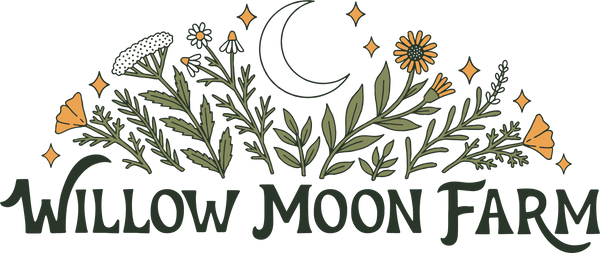
How to Make Bone Broth from Scratch with Our Mountain-Raised Pork Bones
How to Make Bone Broth from Scratch with Our Mountain-Raised Pork Bones
Plus: How It Helped Heal My Gut Naturally
On our farm, we raise heritage pork the way it was always meant to be—on pasture, with fresh air, sunshine, and humanely. The bones that come from our animals are rich in marrow, minerals, and deep flavor—perfect for crafting the kind of broth that soothes, strengthens, and heals from the inside out.
And I don’t say that lightly.
After battling a H. pylori infection that left my gut inflamed, bloated, and struggling for over a year and a half, bone broth became my medicine. It was the first thing I reached for in the mornings. It calmed the fire in my belly. It gave my body something easy to digest, yet full of life-giving nourishment.
Let me show you how to make it from scratch, just like I do in my farmhouse kitchen.
Farmhouse Bone Broth Recipe with Pork Bones
You’ll Need:
• 3–5 lbs of our mountain-raised pork bones (a mix of marrow bones, knuckles, and a few meaty cuts is ideal)
• 2 tablespoons raw apple cider vinegar (helps pull minerals from the bones)
• 1 onion, quartered
• 2 carrots, chopped
• 2 celery stalks, chopped
• 3–5 cloves garlic, smashed
• A few sprigs of fresh thyme, rosemary, or parsley (or a teaspoon of dried)
• Sea salt and pepper to taste
• Optional: a small piece of ginger or turmeric for added anti-inflammatory benefits
• Cold filtered water
Instructions:
1. Roast the bones (optional, but flavorful):
Place your pork bones on a sheet pan and roast at 400°F for about 30–45 minutes, until golden brown. This adds depth and richness to the broth.
2. Place everything into a large stockpot or slow cooker:
Add the roasted bones, vegetables, herbs, vinegar, and a good pinch of salt and pepper. Cover completely with water—about 12–16 cups depending on your pot size.
3. Bring to a gentle boil, then reduce to a low simmer:
Skim any foam off the top in the first hour (this is not required). Then let it simmer low and slow for 12–24 hours. If you’re using a slow cooker, set it and forget it.
4. Strain and store:
Let it cool slightly. Use a fine mesh strainer to separate the broth from the solids. Store in glass jars in the fridge for up to a week, or freeze for later.
Why Bone Broth Heals:
Bone broth is full of gelatin, collagen, and amino acids like glutamine and glycine—powerful building blocks for your gut lining, joints, and skin. During my healing journey, I learned that my body didn’t need antibiotics to kill the infection or stomach acid reducers. It needed nourishment that was simple, real, and alive. Did you know your stomach lining replenishes itself every 3 weeks?!
Every steaming mug of pork bone broth felt like a warm hug to my gut. It was gentle enough for my inflamed stomach, yet full of minerals that my body had been craving.
It helped me:
• Rebuild my gut lining
• Soothe inflammation
• Support my immune system
• Boost my energy
• Feel grounded again
And honestly? It just feels good. There’s a reason bone broth has been a healing tradition in every culture across time. It’s comfort. It’s medicine. It’s slow, ancestral food.
Where to Get the Bones:
If you are local to use and can pick up from the farm we offer them in our Homesteader Boxes (over 10 pounds of high-quality bones and fat) or you can purchase them by the bag (they range in 3-5 pound bags).
Your broth will only be as healing as the ingredients you use. Start with bones from animals raised right, and your body will thank you.
If you need to find them elsewhere check for a local farmer that raises pigs in wide open spaces.
Final Thoughts: This is More Than Broth—It’s a Return
To me, bone broth is a return to what matters. It’s time in the kitchen with my kids underfoot, soup simmering on the stove while we tend the garden. It’s choosing nourishment over convenience. Roots over trends. Slow over fast.
And if your body is calling out for healing—whether from stress, sickness, or just everyday life—I hope this recipe finds you like it found me.
From my farm kitchen to yours,
Sara
